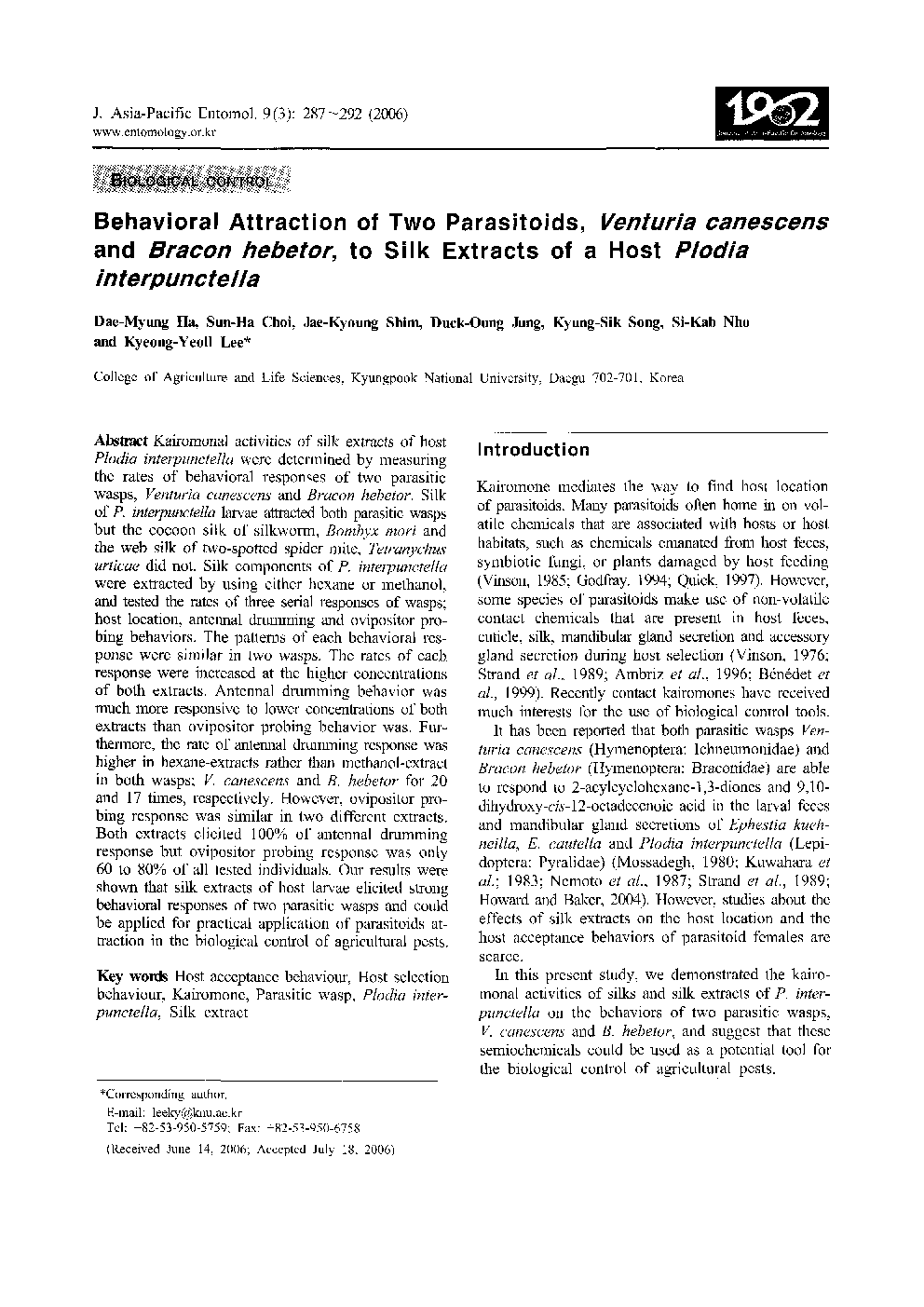| Article ID | Journal | Published Year | Pages | File Type |
|---|---|---|---|---|
| 4525210 | Journal of Asia-Pacific Entomology | 2006 | 6 Pages |
Kairomonal activities of silk extracts of host Plodia interpunctella were determined by measuring the rates of behavioral responses of two parasitic wasps, Venturia canescens and Bracon hebetor. Silk of P. interpunctella larvae attracted both parasitic wasps but the cocoon silk of silkworm, Bombyx mori and the web silk of two-spotted spider mite, Tetranychus urticae did not. Silk components of P. interpunctella were extracted by using either hexane or methanol, and tested the rates of three serial responses of wasps; host location, antennal drumming and ovipositor probing behaviors. The patterns of each behavioral response were similar in two wasps. The rates of each response were increased at the higher concentrations of both extracts. Antennal drumming behavior was much more responsive to lower concentrations of both extracts than ovipositor probing behavior was. Furthermore, the rate of antennal drumming response was higher in hexane-extracts rather than methanol-extract in both wasps; V. canescens and B. hebetor for 20 and 17 times, respectively. However, ovipositor probing response was similar in two different extracts. Both extracts elicited 100% of antennal drumming response but ovipositor probing response was only 60 to 80% of all tested individuals. Our results were shown that silk extracts of host larvae elicited strong behavioral responses of two parasitic wasps and could be applied for practical application of parasitoids attraction in the biological control of agricultural pests.
